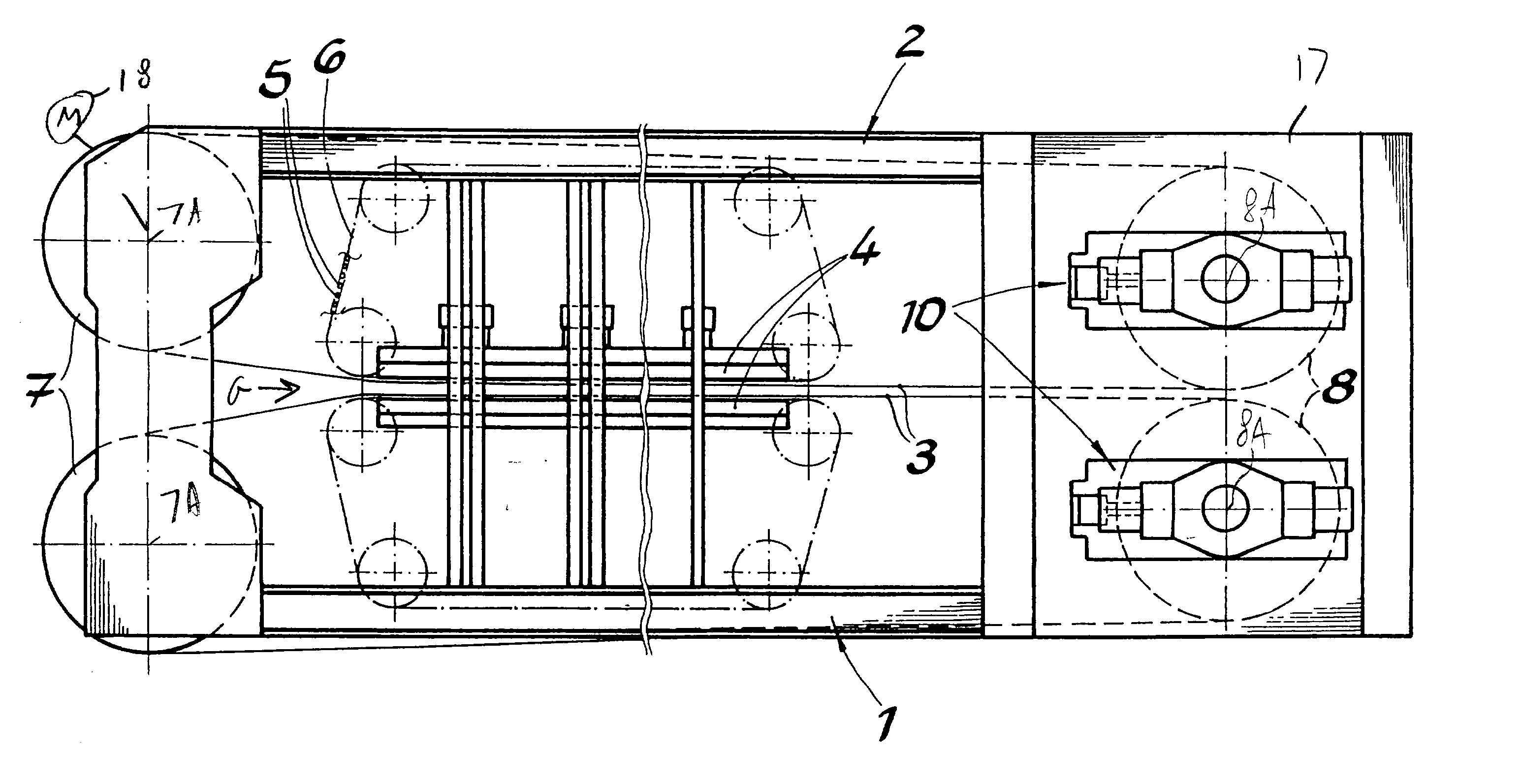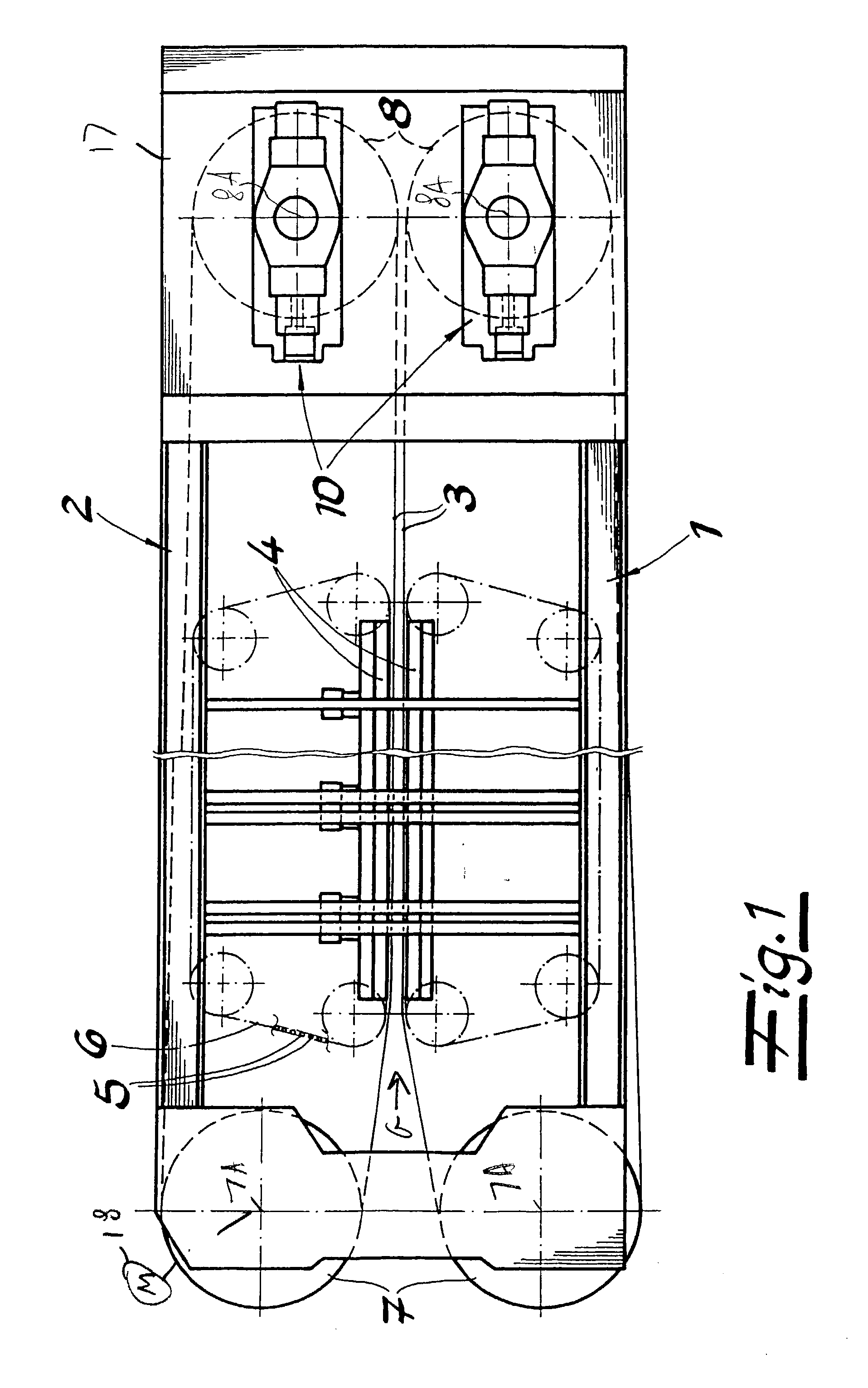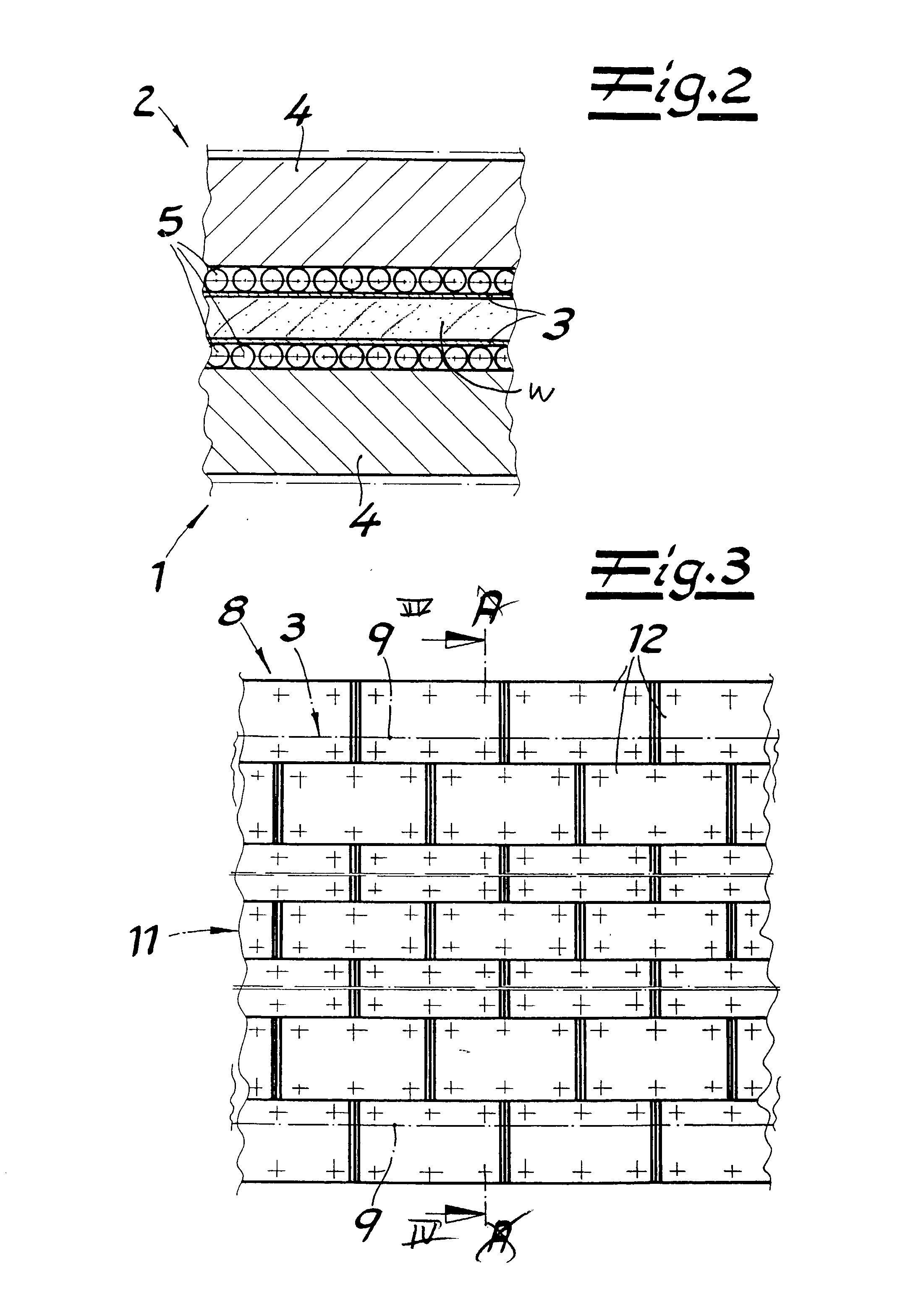Belt-type particleboard press
a belt-type, particleboard technology, applied in the dryer section, dough-sheeters/rolling machines/rolling pins, dryers with progressive movements, etc., can solve the problems of overstressed edge region belt failure, large disadvantage, and exposed rollers at their ends, so as to prolong the service life
- Summary
- Abstract
- Description
- Claims
- Application Information
AI Technical Summary
Benefits of technology
Problems solved by technology
Method used
Image
Examples
Embodiment Construction
[0023] A belt has a length l of 65 m and the working stretches in actual contact with the workpiece W have a length of 40 m. There is a temperature differential .DELTA.T of 80.degree. C. between the hot center region 11 and the cooler edge strips 9. This produces in the edge strips 9 a stretch .epsilon. as follows:
.epsilon.=.alpha..multidot..DELTA.T==11.multidot.10.sup.-6.multidot.80.deg-ree.=8.8.multidot.10.sup.-4.
[0024] Hence
.epsilon.=.DELTA.l / l.gtoreq..DELTA.l=8.8.multidot.10.sup.-4.multidot.40 m=35 mm.
[0025] The drums 7 and 8 have a diameter D of 2950 mm producing a circumference .phi. as follows:
.phi.=.pi. D=9267 mm.
[0026] The belts 3 are only looped around half, that is 180.degree., of the drums 7 and 8 so that
.phi. / 2=4633 mm.
[0027] Since the colder and shorter belt edges 9 the circumference .phi. of the drums 7 and / or 8 where they contact these edges 9 must be
4633 mm-35 mm=4598 mm.
[0028] This corresponds to a diameter of 2972 mm at the formations 12, some 23 mm smaller in dia...
PUM
 Login to View More
Login to View More Abstract
Description
Claims
Application Information
 Login to View More
Login to View More - R&D
- Intellectual Property
- Life Sciences
- Materials
- Tech Scout
- Unparalleled Data Quality
- Higher Quality Content
- 60% Fewer Hallucinations
Browse by: Latest US Patents, China's latest patents, Technical Efficacy Thesaurus, Application Domain, Technology Topic, Popular Technical Reports.
© 2025 PatSnap. All rights reserved.Legal|Privacy policy|Modern Slavery Act Transparency Statement|Sitemap|About US| Contact US: help@patsnap.com



